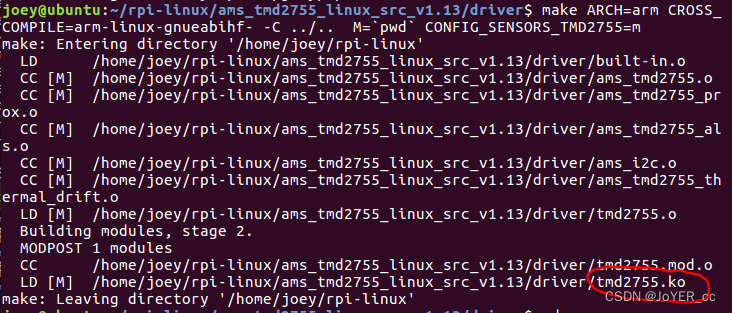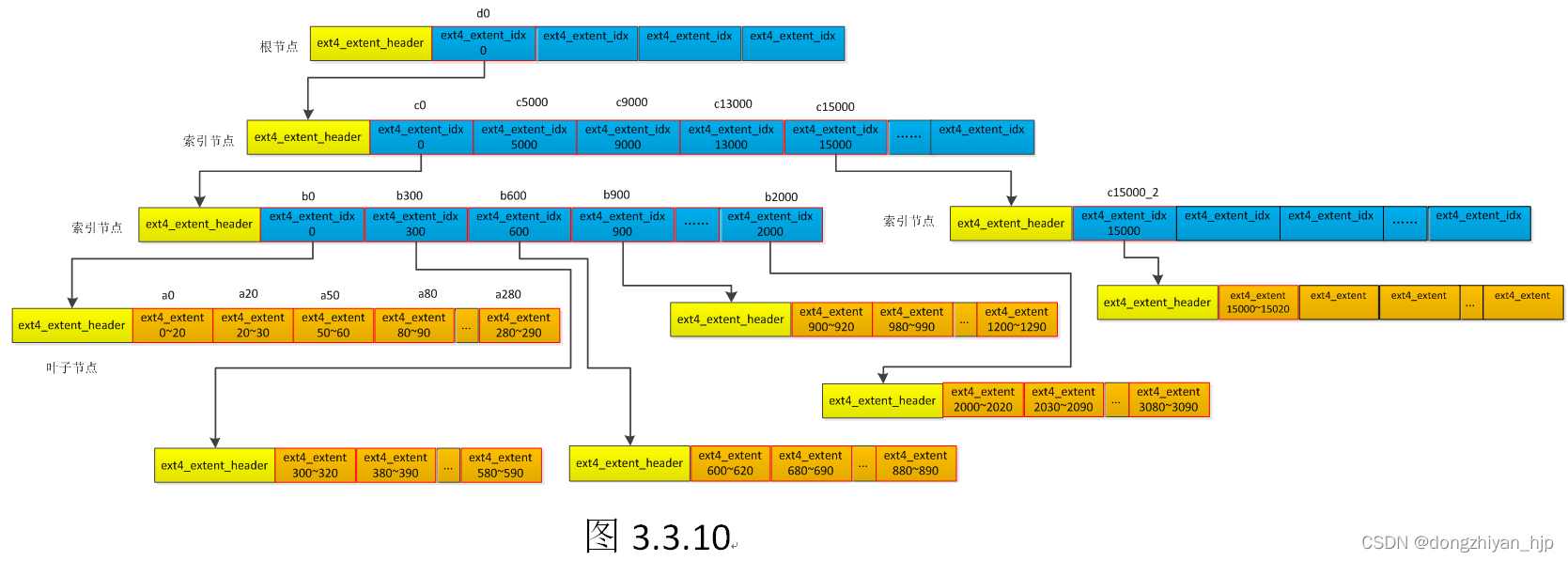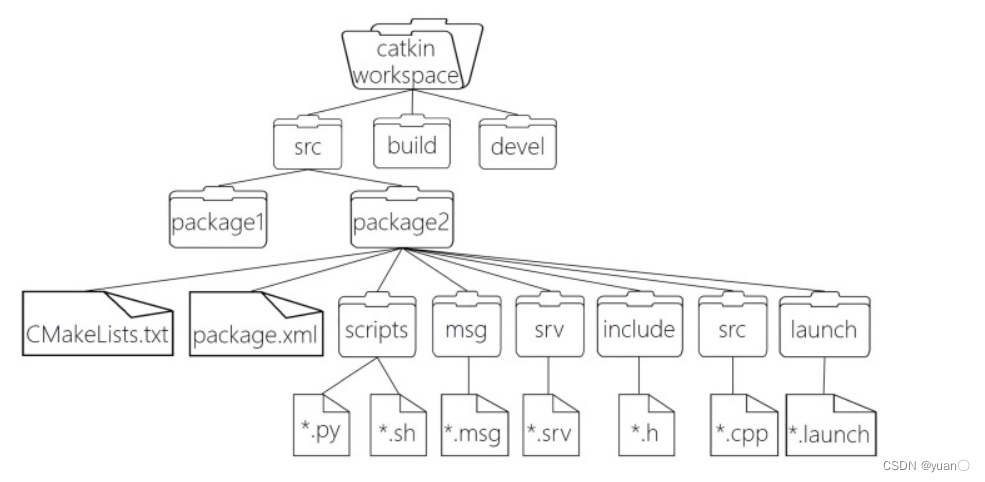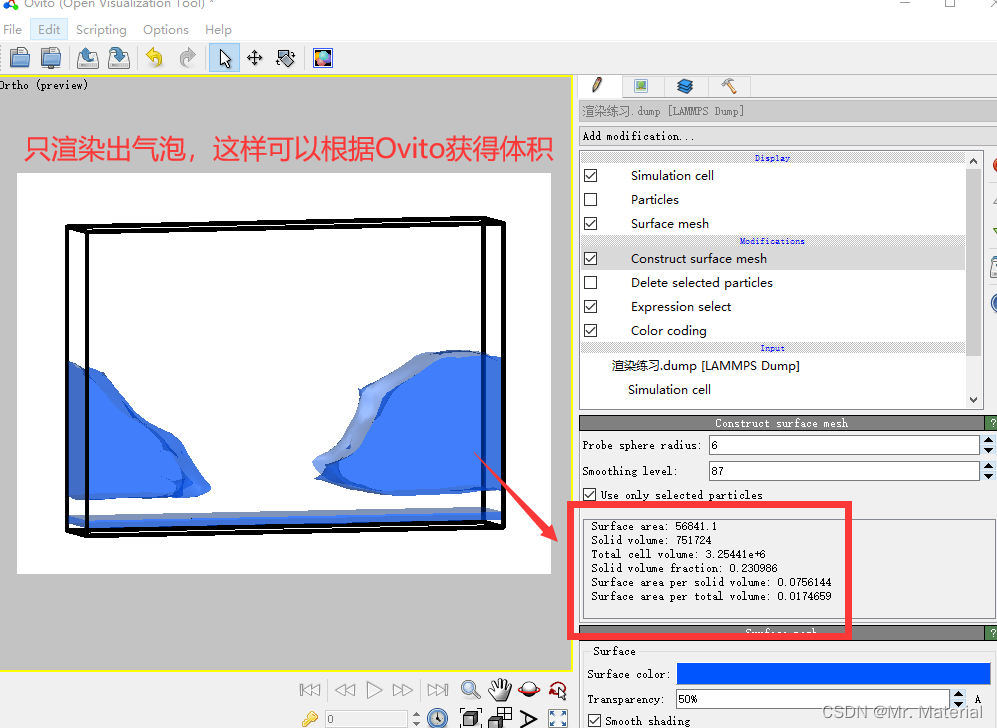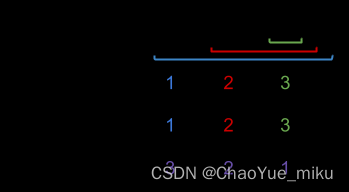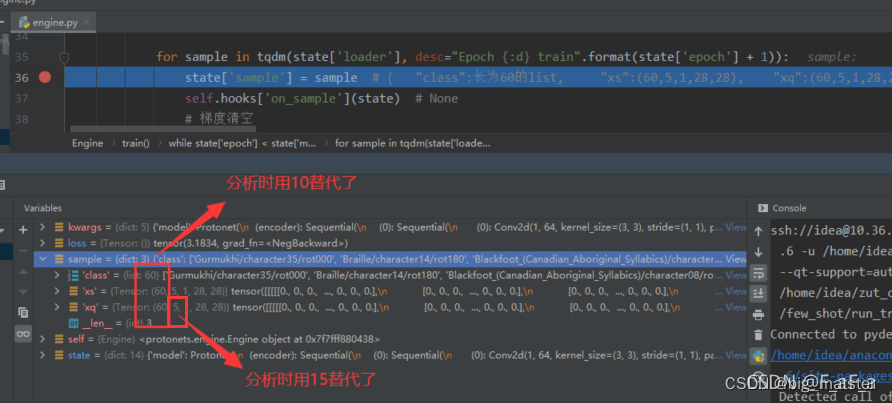
目录
一、底层结构
1. 哈希的概念
二、哈希冲突
三、哈希函数
四、解决哈希冲突
1. 闭散列(开放定址法)
1. 线性探测
2. 二次探测
2. 闭散列的实现
3. 开散列(拉链法)
4. 开散列和闭散列的比较
五、HashTable的改造
六、unordered_set的模拟实现
七、unordered_smap的模拟实现
一、底层结构
unordered系列的关联式容器之所以效率比较高,是因为其底层使用了哈希结构。
1. 哈希的概念
顺序结构以及平衡树中,元素关键码与其存储位置之间没有对应的关系,因此在查找一个元素时,必须要经过关键码的多次比较。顺序查找时间复杂度为O(N),平衡树中为树的高度,即O( logN ),搜索的效率取决于搜索过程中元素的比较次数。
理想的搜索方法:可以不经过任何比较,一次直接从表中得到要搜索的元素。 如果构造一种存储结构,通过某种函数(hashFunc)使元素的存储位置与它的关键码之间能够建立一一映射的关系,那么在查找时通过该函数可以很快找到该元素。当向该结构中:
插入元素
- 根据待插入元素的关键码,以此函数计算出该元素的存储位置并按此位置进行存放
搜索元素
- 对元素的关键码进行同样的计算,把求得的函数值当做元素的存储位置,在结构中按此位置取元素比较,若关键码相等,则搜索成功
该方式即为哈希(散列)方法,哈希方法中使用的转换函数称为哈希(散列)函数,构造出来的结构称为哈希表(Hash Table)(或者称散列表)。
例如:数据集合{1,7,6,4,5,9}
哈希函数设置为:hash(key) = key % capacity; capacity为存储元素底层空间总的大小。
我们将数据映射到capacity为10的哈希表中如下:
用该方法进行搜索不必进行多次关键码的比较,因此搜索的速度比较快问题:按照上述哈希方式,向集合中插入元素44,会出现什么问题?(会出现哈希冲突)
二、哈希冲突
从下图可以看出,集合中的元素1, 4, 5, 6, 7, 9在进行同样的哈希函数时,都能找到对应的位置进行存储,但是当元素44进行哈希函数时,和之前集合中的元素4位置相同,对于这样的现象,我们称之为哈希冲突。
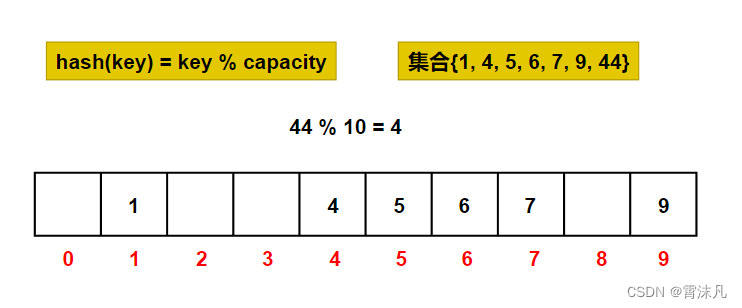
总结:不同关键字通过相同哈希哈数计算出相同的哈希地址,该种现象称为哈希冲突或哈希碰撞
三、哈希函数
引起哈希冲突的一个原因可能是:哈希函数设计不够合理。 哈希函数设计原则:
- 哈希函数的定义域必须包括需要存储的全部关键码,而如果散列表允许有m个地址时,其值域必须在0到m-1之间
- 哈希函数计算出来的地址能均匀分布在整个空间中
- 哈希函数应该比较简单
常见的哈希函数:
1. 直接定制法--(常用)取关键字的某个线性函数为散列地址:Hash(Key)= A*Key + B 优点:简单、均匀 缺点:需要事先知道关键字的分布情况 使用场景:适合查找比较小且连续的情况。2. 除留余数法--(常用)设散列表中允许的地址数为m,取一个不大于m,但最接近或者等于m的质数p作为除数,按照哈希函数:Hash(key) = key% p(p<=m),将关键码转换成哈希地址。3. 平方取中法--(了解)假设关键字为1234,对它平方就是1522756,抽取中间的3位227作为哈希地址; 再比如关键字为4321,对它平方就是18671041,抽取中间的3位671(或710)作为哈希地址。平方取中法比较适合:不知道关键字的分布,而位数又不是很大的情况。4. 折叠法--(了解)折叠法是将关键字从左到右分割成位数相等的几部分(最后一部分位数可以短些),然后将这几部分叠加求和,并按散列表表长,取后几位作为散列地址。折叠法适合事先不需要知道关键字的分布,适合关键字位数比较多的情况。5. 随机数法--(了解)选择一个随机函数,取关键字的随机函数值为它的哈希地址,即H(key) = random(key),其中random为随机数函数。 通常应用于关键字长度不等时采用此法。注意:哈希函数设计的越精妙,产生哈希冲突的可能性就越低,但是无法避免哈希冲突
四、解决哈希冲突
1. 闭散列(开放定址法)
闭散列:也叫开放定址法,当发生哈希冲突时,如果哈希表未被装满,说明在哈希表中必然还有空位置,那么可以把key存放到冲突位置中的“下一个” 空位置中去。那如何寻找下一个空位置呢?
1. 线性探测
线性探测:从发生冲突的位置开始,依次向后探测,直到寻找到下一个空位置为止。
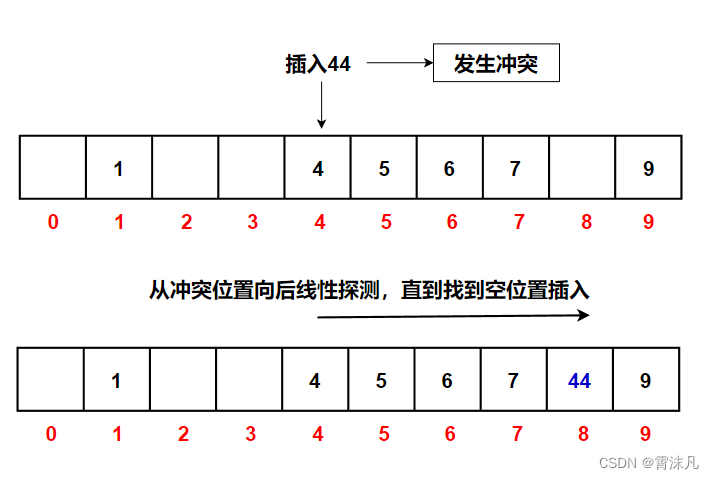
上图只是一个元素产生了位置冲突,如果有多个元素与4这个位置产生冲突,那么后插入的元素就会把其他空位置给占了,就会导致你占我的,我占别人的情况,为了解决这样的问题,我们需要引入负载因子。
负载因子 = 表中的有效数据 / 空间的大小。
- 负载因子越大,产生冲突的概率越大,增删查改的效率低,空间浪费越少;
- 负载因子越小,产生冲突的概率越小,增删查改的效率高,空间浪费越大;

从上图可以看出,当哈希表的空间变为20时,插入了一些冲突的值(在哈希表空间为10的时候是产生冲突的),但是发现冲突减少了;
对于闭散列来说,负载因子是特别重要的因素,一般控制在0.7
~0.8以下,超过0.8会导致在查表时CPU缓存不命中按照曲线上升。
线性探测的优点:实现简单
缺点:发生冲突,容易产生数据堆积,出现踩踏,导致搜索效率低。
2. 二次探测
线性探测的缺陷是产生冲突的数据堆积在一块,这与其找下一个空位置有关系,因为找空位置的方式就 是挨着往后逐个去找,因此二次探测为了避免该问题,找下一个空位置的方法为:Hash(key) = key % len + i ^2;(i=0,1,2…)

通过线性探测和二次探测的比较,我们发现哈希冲突明显好了很多;
2. 闭散列的实现
采用闭散列处理哈希冲突时,不能随便物理删除哈希表中已有的元素,若直接删除元素会影响其他元素的搜索。比如删除元素11,如果直接删除掉,21查找起来可能会受影响。因此线性探测采用标记的伪删除法来删除一个元素。
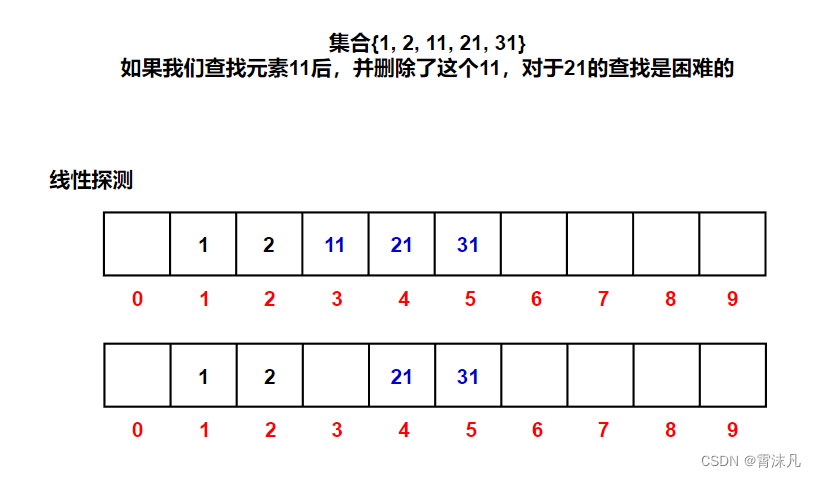
11和21是和1冲突,从1开始找,找到11后并删除。紧接着去找21,但是遍历到2后面是一个空,但是21还在表中,不可能遍历一遍哈希表,这样就是去了哈希表的意义了。因此要在哈希表中加上状态。当哈希表中删除一个元素后,我们不应该简单的将状态设为EMPTY,要将该位置的状态设为DELETE。在查找的过程中,如果当前位置和查找的Key值不相等,但是当前位置的状态是EXIST或者是DELETE,我们都要往后查找,而当我们插入时,可以插入到状态EMPTY和DELETE上。
enum Status//标识哈希表中每个元素的状态
{
EXIST, // 无数据的空位置
EMPTY, // 已存储数据
DELETE, // 原本有数据,但是被删除了
};代码如下:
namespace CloseHash
{
enum Status//标识哈希表元素的状态
{
EXIST, //无数据的空位置
EMPTY, //已存储数据
DELETE, //原本有数据,但是被删除了
};
//哈希表的结构
template<class K, class V>
struct HashData
{
pair<K, V> _kv;
Status _status = EMPTY;
};
//哈希表提供的仿函数(支持string类型,走的是特化的版本)
template<class K>
struct Hash
{
size_t operator()(const K& key)
{
return key;
}
};
template<>//特化
struct Hash<string>
{
//BKDR哈希
size_t operator()(const string& s)
{
size_t value = 0;
for (auto ch : s)
{
value *= 31;
value += ch;
}
return value;
}
};
//哈希表的实现(kv模型和缺省的仿函数)
template<class K, class V , class HashFunc = Hash<K>>
class HashTable
{
public:
//哈希表的删除
bool Erase(const K& key)
{
HashData<K, V>* ret = Find(key);
if (ret == nullptr)
{
return false;
}
else
{
--_n;
ret->_status = DELETE;
return true;
}
}
//哈希表的查找
HashData<K, V>* Find(const K& key)
{
if (_tables.size() == 0)
{
return nullptr;
}
HashFunc hf;
size_t start = hf(key) % _tables.size();
size_t i = 0;
size_t index = start;
while (_tables[index]._status != EMPTY)
{
if (_tables[index]._kv.first == key && _tables[index]._status == EXIST)
{
return &_tables[index];
}
++i;
index = start + i;//线性探测
//index = start + i*i;//二次探测
index %= _tables.size();
}
return nullptr;
}
//哈希表的插入
bool Insert(const pair<K, V>& kv)
{
HashData<K, V>* ret = Find(kv.first);
if (ret)
{
return false;
}
//负载因子到0.7就扩容
//负载因子越小,冲突概率越低,效率越高,空间浪费越多
//负载因子越大,冲突概率越高,效率越低,空间浪费越少
if (_tables.size() == 0 || _n * 10 / _tables.size() >= 7)
{
//扩容
size_t newSize = _tables.size() == 0 ? 10 : _tables.size() * 2;
HashTable<K, V, HashFunc> newHT;
newHT._tables.resize(newSize);
for (size_t i = 0; i < _tables.size(); ++i)
{
if (_tables[i]._status == EXIST)
{
newHT.Insert(_tables[i]._kv);
}
}
_tables.swap(newHT._tables);
}
HashFunc hf;
size_t start = hf(kv.first) % _tables.size();
size_t i = 0;
size_t index = start;
//线性探测
while (_tables[index]._status == EXIST)
{
++i;
index = start + i;//线性探测
//index = start + i*i;//二次探测
index %= _tables.size();
}
_tables[index]._kv = kv;
_tables[index]._status = EXIST;
++_n;
return true;
}
private:
vector<HashData<K, V>> _tables;
size_t _n = 0;//有效数据个数
};
}3. 开散列(拉链法)
开散列法又叫链地址法(开链法),首先对关键码集合用散列函数计算散列地址,具有相同地址的关键码归于同一子集合,每一个子集合称为一个桶,各个桶中的元素通过一个单链表链接起来,各链表的头结点存储在哈希表中。

代码实现:
namespace LinkHash
{
template<class K>
struct Hash
{
size_t operator()(const K& key)
{
return key;
}
};
template<>//特化
struct Hash<string>
{
//BKDR哈希
size_t operator()(const string& s)
{
size_t value = 0;
for (auto ch : s)
{
value *= 31;
value += ch;
}
return value;
}
};
template<class K, class V>
struct HashNode
{
pair<K, V> _kv;
HashNode<K, V>* _next;
HashNode(const pair<K, V>& kv)
:_kv(kv)
, _next(nullptr)
{}
};
template<class K, class V, class HashFunc = Hash<K>>
class HashTable
{
typedef HashNode<K, V> Node;
public:
//删除
bool Erase(const K& key)
{
if (_tables.empty())//如果号系表为空,直接返回false
{
return false;
}
HashFunc hf;//定义仿函数对象
size_t index = hf(key) % _tables.size();//通过哈希函数计算出对应的哈希桶编号index
Node* cur = _tables[index];
Node* prev = nullptr;
while (cur)//遍历哈希桶,也就是遍历单链表
{
if (cur->_kv.first == key)
{
if (prev == nullptr)//头删
{
_tables[index] = cur->_next;
}
else//中间删除
{
prev->_next = cur->_next;
}
--_n;
delete cur;
return true;
}
else
{
prev = cur;
cur = cur->_next;
}
}
return false;
}
//查找
Node* Find(const K& key)
{
if (_tables.empty())//如果哈希表为空,则直接返回
{
return nullptr;
}
HashFunc hf;//定义仿函数对象
size_t index = hf(key) % _tables.size();//通过哈希函数计算出对应的哈希桶编号index
Node* cur = _tables[index];
while (cur)//遍历哈希桶
{
if (cur->_kv.first == key)
{
return cur;
}
else
{
cur = cur->_next;
}
}
return nullptr;
}
//哈希表在扩容时,采用素数序列进行扩容
size_t GetNextPrime(size_t num)
{
//素数序列
static const unsigned long __stl_prime_list[28] =
{
53, 97, 193, 389,
769, 1543, 3079, 6151,
12289, 24593, 49157, 98317,
196613, 393241, 786433, 1572869,
3145739, 6291469, 12582917, 25165843,
50331653, 100663319, 201326611, 402653189,
805306457, 1610612741, 3221225473, 4294967291
};
for (size_t i = 0; i < 28; i++)
{
if (__stl_prime_list[i] > num)
{
return __stl_prime_list[i];
}
}
return __stl_prime_list[27];
}
//插入
bool Insert(const pair<K, V>& kv)
{
HashFunc hf;
Node* ret = Find(kv.first);//插入元素之前,首先进行查找,如果存在,则不允许插入
if (ret)
{
return false;
}
//负载因子 == 1时就扩容
if (_n == _tables.size())//哈希表的大小为0,或负载因子超过1
{
size_t newSize = GetNextPrime(_tables.size());
vector<Node*> newTables;
newTables.resize(newSize);
for (size_t i = 0; i < _tables.size(); ++i)
{
Node* cur = _tables[i];
while (cur)
{
Node* next = cur->_next;
size_t index = hf(cur->_kv.first) % newTables.size();
//头插
cur->_next = newTables[index];
newTables[index] = cur;
cur = next;
}
_tables[i] = nullptr;
}
_tables.swap(newTables);
}
size_t index = hf(kv.first) % _tables.size();
Node* newnode = new Node(kv);
newnode->_next = _tables[index];
_tables[index] = newnode;
++_n;
return true;
}
private:
vector<Node*> _tables;
size_t _n = 0;//有效的数据个数
};
}4. 开散列和闭散列的比较
应用链地址法处理溢出,需要增设链接指针,似乎增加了存储开销。事实上: 由于开地址法必须保持大量的空闲空间以确保搜索效率,如二次探查法要求装载因子a <= 0.7,而表项所占空间又比指针大的多,所以使用链地址法反而比开地址法节省存储空间。
五、HashTable的改造
开散列增容的问题:
桶的个数是一定的,随着元素的不断插入,每个桶中元素的个数不断增多,极端情况下,可能会导致一个桶中链表节点非常多,会影响的哈希表的性能,因此在一定条件下需要对哈希表进行增容,那该条件怎么确认呢?开散列最好的情况是:每个哈希桶中刚好挂一个节点,再继续插入元素时,每一次都会发 生哈希冲突,因此,在元素个数刚好等于桶的个数时,可以给哈希表增容。
#include <iostream>
#include <vector>
#include <string>
using namespace std;
template<class K>
struct Hash
{
size_t operator()(const K& key)
{
return key;
}
};
template<>//特化
struct Hash<string>
{
//BKDR哈希
size_t operator()(const string& s)
{
size_t value = 0;
for (auto ch : s)
{
value *= 31;
value += ch;
}
return value;
}
};
namespace LinkHash
{
template<class T>
struct HashNode
{
T _data;
HashNode<T>* _next;
HashNode(const T& data)
:_data(data)
, _next(nullptr)
{}
};
template<class K, class T, class KeyOfT, class HashFunc>
class HashTable;
template<class K, class T, class Ref, class Ptr, class KeyOfT, class HashFunc>
struct __HTIterator
{
typedef HashNode<T> Node;
typedef __HTIterator<K, T, Ref, Ptr, KeyOfT, HashFunc> Self;
Node* _node;
HashTable<K, T, KeyOfT, HashFunc>* _pht;
__HTIterator(Node* node, HashTable<K, T, KeyOfT, HashFunc>* pht)
:_node(node)
, _pht(pht)
{}
Ref operator*()
{
return _node->_data;
}
Ptr operator->()
{
return &_node->_data;
}
//前置++
Self& operator++()
{
if (_node->_next)
{
_node = _node->_next;
}
else
{
KeyOfT kot;
HashFunc hf;
size_t index = hf(kot(_node->_data)) % _pht->_tables.size();
++index;
//找下一个不为空的桶
while (index < _pht->_tables.size())
{
if (_pht->_tables[index] != nullptr)
break;
else
++index;
}
//表走完了都没有找到下一个桶
if (index == _pht->_tables.size())
{
_node = nullptr;
}
else
{
_node = _pht->_tables[index];
}
}
return *this;
}
bool operator!=(const Self& s)
{
return _node != s._node;
}
bool operator==(const Self& s)
{
return _node == s._node;
}
};
template<class K, class T, class KeyOfT, class HashFunc>
class HashTable
{
typedef HashNode<T> Node;
template<class K, class T, class Ref, class Ptr, class KeyOfT, class HashFunc>
friend struct __HTIterator;
typedef HashTable<K, T, KeyOfT, HashFunc>& Self;
public:
typedef __HTIterator<K, T, T&, T*, KeyOfT, HashFunc> iterator;
//HashTable(){}
HashTable() = default;//显示指定编译器去生产默认构造函数
HashTable(const Self& ht)
{
_tables.resize(ht._tables.size());
for (int i = 0; i < ht._tables.size(); i++)
{
Node* cur = ht._tables[i];
while (cur)
{
Node* copy = new Node(cur->_data);
copy->_next = _tables[i];
_tables[i] = copy;
cur = cur->_next;
}
}
}
//ht1 = ht2
Self& operator=(Self copy)
{
swap(_n, copy._n);
_tables.swap(copy._tables);
return *this;
}
~HashTable()
{
for (size_t i = 0; i < _tables.size(); i++)
{
Node* cur = _tables[i];
while (cur)
{
Node* next = cur->_next;
delete cur;
cur = next;
}
}
}
iterator begin()
{
for (size_t i = 0; i < _tables.size(); i++)
{
if (_tables[i])
{
return iterator(_tables[i], this);
}
}
return end();
}
iterator end()
{
return iterator(nullptr, this);
}
bool Erase(const K& key)
{
if (_tables.empty())
{
return false;
}
HashFunc hf;
size_t index = hf(key) % _tables.size();
Node* cur = _tables[index];
Node* prev = nullptr;
KeyOfT kot;
while (cur)
{
if (kot(cur->_data) == key)
{
if (prev == nullptr)//头删
{
_tables[index] = cur->_next;
}
else//中间删除
{
prev->_next = cur->_next;
}
--_n;
delete cur;
return true;
}
else
{
prev = cur;
cur = cur->_next;
}
}
return false;
}
iterator Find(const K& key)
{
if (_tables.empty())
{
return end();
}
HashFunc hf;
size_t index = hf(key) % _tables.size();
Node* cur = _tables[index];
KeyOfT kot;
while (cur)
{
if (kot(cur->_data) == key)
{
return iterator(cur, this);
}
else
{
cur = cur->_next;
}
}
return end();
}
size_t GetNextPrime(size_t num)
{
static const unsigned long __stl_prime_list[28] =
{
53, 97, 193, 389,
769, 1543, 3079, 6151,
12289, 24593, 49157, 98317,
196613, 393241, 786433, 1572869,
3145739, 6291469, 12582917, 25165843,
50331653, 100663319, 201326611, 402653189,
805306457, 1610612741, 3221225473, 4294967291
};
for (size_t i = 0; i < 28; i++)
{
if (__stl_prime_list[i] > num)
{
return __stl_prime_list[i];
}
}
return __stl_prime_list[27];
}
pair<iterator, bool> Insert(const T& data)
{
HashFunc hf;
KeyOfT kot;
iterator ret = Find(kot(data));
if (ret != end())
{
return make_pair(ret, false);
}
//负载因子 == 1时就扩容
if (_n == _tables.size())
{
//size_t newSize = _tables.size() == 0 ? 10 : _tables.size() * 2;
size_t newSize = GetNextPrime(_tables.size());
vector<Node*> newTables;
newTables.resize(newSize);
for (size_t i = 0; i < _tables.size(); ++i)
{
Node* cur = _tables[i];
while (cur)
{
Node* next = cur->_next;
size_t index = hf(kot(cur->_data)) % newTables.size();
//头插
cur->_next = newTables[index];
newTables[index] = cur;
cur = next;
}
_tables[i] = nullptr;
}
_tables.swap(newTables);
}
size_t index = hf(kot(data)) % _tables.size();
Node* newnode = new Node(data);
newnode->_next = _tables[index];
_tables[index] = newnode;
++_n;
//return true;
return make_pair(iterator(newnode, this), false);
}
private:
vector<Node*> _tables;
size_t _n = 0;//有效的数据个数
};
void TestHashTable()
{
}
}六、unordered_set的模拟实现
#include "HashTable.h"
namespace mlg
{
template<class K, class hash = Hash<K>>
class unordered_set
{
struct SetKeyOfT
{
const K& operator()(const K& key)
{
return key;
}
};
public:
typedef typename LinkHash::HashTable<K, K, SetKeyOfT, hash>::iterator iterator;
iterator begin()
{
return _ht.begin();
}
iterator end()
{
return _ht.end();
}
pair<iterator, bool> insert(const K& key)
{
return _ht.Insert(key);
}
private:
LinkHash::HashTable<K, K, SetKeyOfT, hash> _ht;
};
}七、unordered_smap的模拟实现
#include "HashTable.h"
namespace mlg
{
template<class K, class V, class hash = Hash<K>>
class unordered_map
{
struct MapKeyOfT
{
const K& operator()(const pair<K, V>& kv)
{
return kv.first;
}
};
public:
typedef typename LinkHash::HashTable<K, pair<K, V>, MapKeyOfT, hash>::iterator iterator;
iterator begin()
{
return _ht.begin();
}
iterator end()
{
return _ht.end();
}
V& operator[](const K& key)
{
auto ret = _ht.Insert(make_pair(key, V()));
return ret.first->second;
}
pair<iterator, bool> insert(const pair<K, V>& kv)
{
return _ht.Insert(kv);
}
private:
LinkHash::HashTable<K, pair<K, V>, MapKeyOfT, hash> _ht;
};
}
